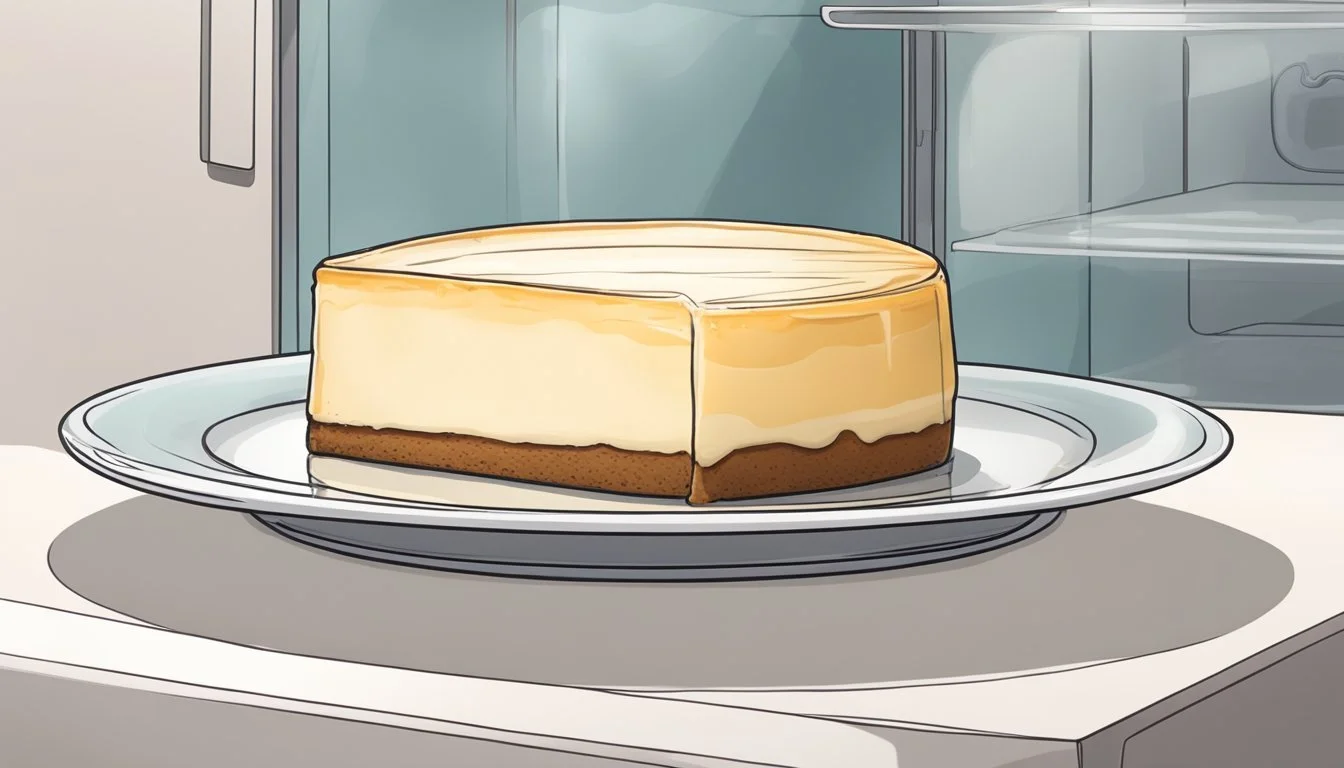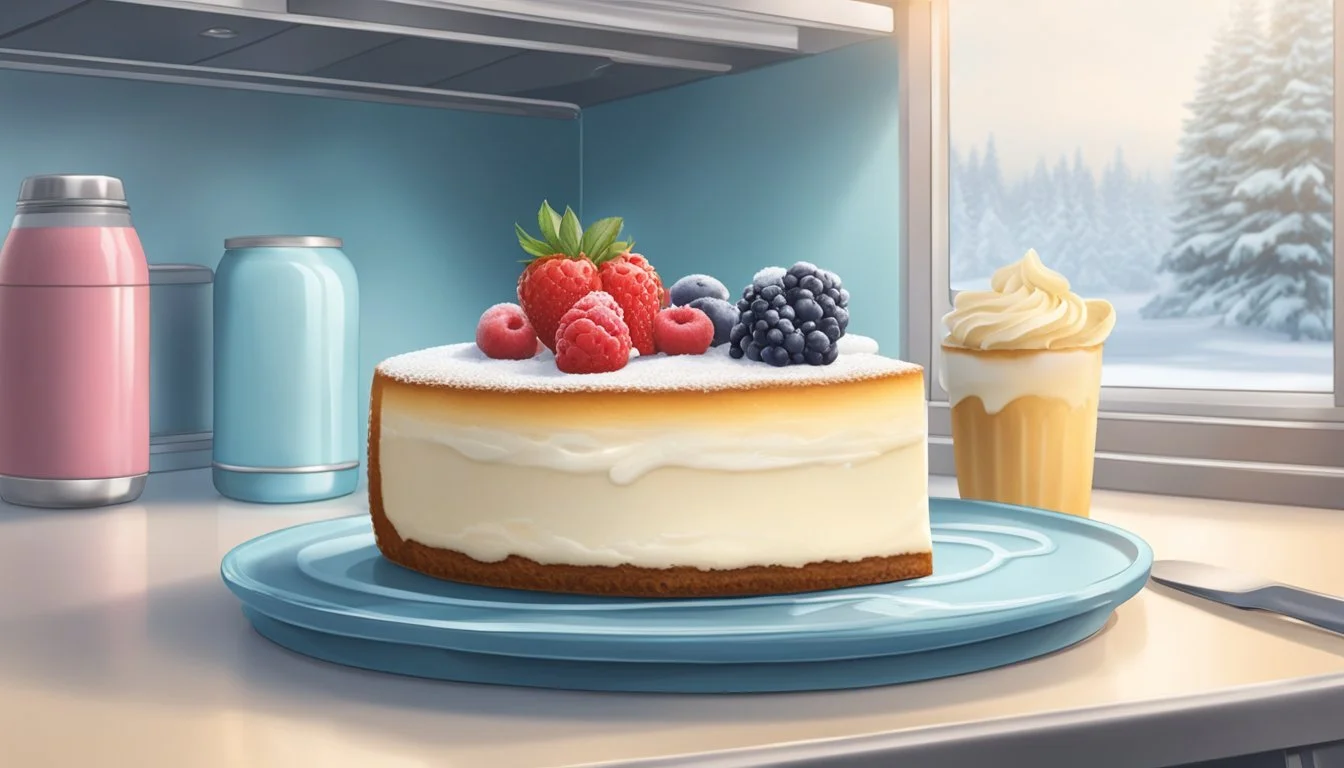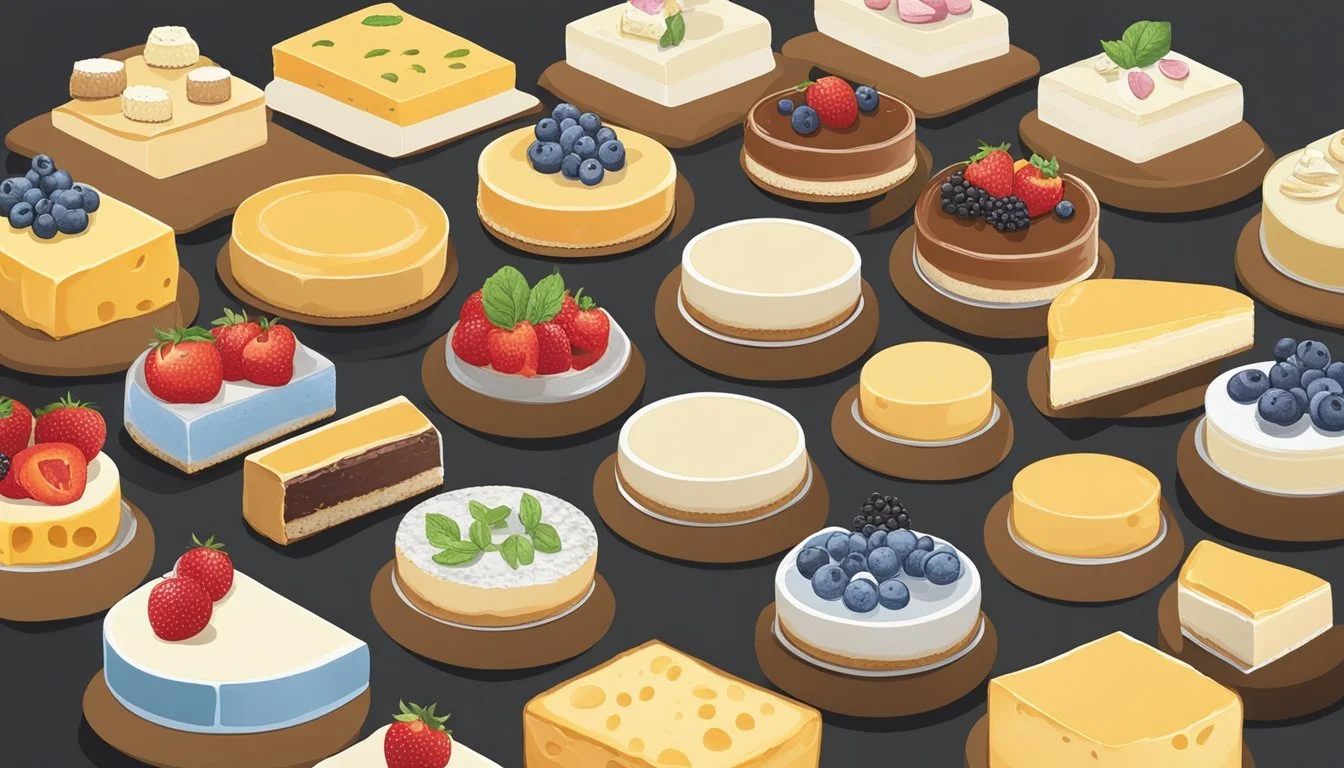Do I Have to Refrigerate Cheesecake?
Understanding Proper Storage Methods
Cheesecakes require proper storage to maintain their taste and safety for consumption. Due to their high content of eggs, milk, and cream cheese, which are rich in proteins and moisture, cheesecakes are highly prone to bacterial growth if left at room temperature for too long. To inhibit the proliferation of bacteria and ensure safety, a cheesecake must be refrigerated following a specific cooling period post-baking.
After baking, cheesecakes should be allowed to cool at room temperature to set properly, which typically takes about an hour. This step is crucial for the texture and structural integrity of the dessert. Once cooled, the cheesecake must be transferred to a refrigerator because the cool environment keeps it safe for eating and prolongs its shelf life. Proper refrigeration is not only a matter of food quality but also of food safety, as it significantly lowers the risk of foodborne illnesses.
Basics of Cheesecake Storage
Storing cheesecake correctly is crucial for maintaining freshness and preventing foodborne illness. The perishable ingredients like cream cheese and milk proteins demand careful handling.
Importance of Refrigeration
Refrigeration is essential for cheesecake because it contains dairy products, including cream cheese and milk, which are prone to bacterial growth. The shelf life of cheesecake is greatly extended when stored in the fridge. The optimal storage temperature for cheesecake to remain fresh and safe to consume is below 40°F, which prevents the rapid proliferation of bacteria.
Recommended action:
Store cheesecake in the refrigerator immediately after it has been allowed to cool at room temperature for a brief period, generally around one hour.
Risks of Room Temperature Storage
Leaving cheesecake at room temperature exposes it to the danger zone (40°F to 140°F), where bacteria multiply quickly and food poisoning can become a concern. Dairy and protein-rich desserts (What wine goes well with desserts?) like cheesecake can become unsafe to eat if held above refrigeration temperature for two hours or more.
Potential consequences:
Increased risk of foodborne illness
Decreased freshness and quality of the cheesecake
Always ensure cheesecake is stored in an airtight container or wrapped tightly in the refrigerator to preserve quality and prevent the absorption of other food odors.
Proper Refrigeration Techniques
Proper refrigeration is vital to maintain the quality, taste, and safety of cheesecake. It prevents the growth of bacteria and preserves the dessert's rich texture and flavor.
Optimal Refrigeration Conditions
To ensure food safety and retain the cheesecake's quality, it should be stored in the fridge at temperatures below 40°F. This temperature range inhibits bacterial growth that can spoil the cheesecake. Refrigeration also helps to maintain the dessert's moisture content without letting it become too dry or too wet, which could affect both texture and taste. Store the cheesecake in the fridge once it has cooled to room temperature, which usually takes about an hour or so after baking.
Covering and Wrapping Methods
Cheesecake should be wrapped with plastic wrap or foil before being placed in the fridge to prevent absorption of other odors and to minimize condensation that can spoil the texture. One could also store the cheesecake in an airtight container to protect it from fridge odors and to keep it from drying out. Here is a brief method to prepare cheesecake for refrigeration:
Allow cheesecake to cool at room temperature after baking.
Gently wrap the cheesecake with plastic wrap or foil, or place it in an airtight storage container.
Ensure the cheesecake is wrapped or contained properly to avoid moisture loss and to prevent it from absorbing other odors in the fridge.
Place the wrapped or covered cheesecake in the fridge for at least 4 hours before serving. This will allow its texture to firm up and flavors to meld properly.
Freezing Cheesecake
Freezing cheesecake is a practical way to extend its shelf life while maintaining quality. Proper wrapping and thawing techniques are critical to avoid freezer burn and preserve the cheesecake's texture and flavor.
Preparing for the Freezer
To freeze cheesecake, one should ensure it is fully set by cooling a baked cheesecake to room temperature and then chilling it in the refrigerator. No-bake cheesecakes require ample chilling time to set properly before freezing. The cheesecake should then be wrapped securely:
Wrap with Plastic Wrap: Cover the entire cheesecake with plastic wrap, making sure there are no gaps for air to enter.
Add a Layer of Foil: For added protection, wrap the cheesecake with a layer of aluminum foil over the plastic wrap.
Place in an Airtight Container: Optionally, place the wrapped cheesecake in an airtight container to further guard against freezer burn and odor absorption.
By following these steps, one can freeze cheesecake and expect it to retain its original taste and texture for up to several months.
Thawing Techniques
To thaw frozen cheesecake, one should exercise patience to ensure the quality is preserved:
In the Refrigerator: Transfer the cheesecake from the freezer to the refrigerator and let it thaw gradually for several hours or overnight. This helps the cheesecake to maintain its structure and prevents any sudden texture changes.
On the Counter: Should one require a quicker method, they can allow the cheesecake to sit on the counter for about 30 minutes to an hour. However, it is important not to leave the cheesecake at room temperature for too long to reduce the risk of bacterial growth.
Using these thawing techniques ensures that a frozen cheesecake is ready for consumption while still retaining its desirable creamy texture and flavor profile. It is not recommended to thaw cheesecake in the microwave, as this can negatively affect its quality.
Special Considerations for Different Types of Cheesecake
The storage and handling of cheesecake can vary greatly depending on the type. It is crucial to understand these differences to maintain the quality and texture of the dessert.
No-Bake Cheesecake
No-bake cheesecake relies on refrigeration to set properly, as it does not undergo the baking process to solidify. After mixing the ingredients, one should place the cheesecake in the refrigerator for several hours, allowing it to firm up. No-bake cheesecake must be stored in the fridge at all times to maintain its structure and prevent spoilage, since it often contains perishable ingredients like cream cheese and whipped cream.
New York-Style and Other Baked Cheesecakes
For New York-style cheesecake and other baked cheesecake varieties, proper cooling after baking is essential for texture quality. These cheesecakes should be safely baked to an internal temperature of 150ºF to 160°F and then cooled at room temperature, typically for an hour. Once the initial cooling on a wire rack is complete to prevent condensation, it needs to be transferred to the refrigerator to continue cooling and to set completely.
Proper storage in the fridge is also essential for these types of baked cheesecakes. They should be kept in an airtight container to extend freshness and prevent the absorption of other food odors in the refrigerator. Baked cheesecakes generally have a denser texture and richer flavor, which are best preserved when the cheesecake is properly cooled and refrigerated.
Keeping Cheesecake Fresh Longer
Proper storage is crucial for maintaining the quality and extending the shelf life of cheesecake, whether it's freshly baked or leftover. By controlling exposure to factors that can lead to spoilage, such as moisture and bacteria, one can enjoy cheesecake at its best for longer.
Extending Shelf Life
Cheesecake should always be refrigerated to preserve its freshness. The optimal temperature for storing cheesecake is between 36°F to 40°F (2°C to 4°C). The high fat content in cheesecake acts as a natural preservative, but it's essential to store cheesecake covered to prevent it from drying out and absorbing odors from the kitchen.
Here are key steps for storing a freshly baked cheesecake:
Allow the cheesecake to cool at room temperature for at least one hour after baking.
Refrigerate the cheesecake while still in the pan to help it retain its shape. Keep it in the fridge for an additional hour to firm up.
After it has cooled, remove the cheesecake from the pan and store it in an airtight container or wrap it in plastic wrap.
By following these guidelines, cheesecake can be stored in the refrigerator for up to five days without significant loss of quality.
Dealing with Leftovers
Leftover cheesecake must be handled carefully to prevent spoilage. Immediately refrigerate any unused portions, keeping them covered to protect against contaminants and moisture loss.
Wrap leftovers securely with plastic wrap or aluminum foil, or place them in an airtight container.
If the cheesecake contains fresh fruit or a whipped cream topping, consume it sooner rather than later, as these toppings have a shorter shelf life.
Do not leave cheesecake at room temperature for more than two hours, as exposure to warmer temperatures can promote bacterial growth, making the cheesecake unsafe to eat.
Creative Ways to Use Cheesecake
When it comes to cheesecake, be it a few slices left over from a gathering or a whole cake prepared in advance, one has plenty of options beyond the initial serving. With some imaginative twists, these creamy desserts can delightfully transform into something new or be preserved for future enjoyment.
Repurposing Leftover Cheesecake
Leftover cheesecake presents the perfect opportunity for culinary creativity. A person might choose to:
Create dessert parfaits: By layering crumbled cheesecake with fresh fruit, a dollop of whipped cream, and a drizzle of sauce, one can craft elegant individual servings.
Invent new cookies: Incorporating chunks of cheesecake into cookie dough before baking results in indulgent cheesecake cookies.
It is important to keep in mind that any use of leftovers should always ensure the dessert is still within its safe consumption period and has been stored at the correct internal temperature to prevent food spoilage.
Making Desserts in Advance
Preparing cheesecake ahead of a big event can be a lifesaver. However, when planning to freeze cheesecake, it is vital to:
Bake the cheesecake to the safe internal temperature between 150ºF and 160°F.
Cool it thoroughly at room temperature, then refrigerate.
Once fully set, wrap it securely in plastic wrap or aluminum foil, and thereafter, place in a heavy-duty freezer bag.
While a frozen cheesecake can maintain its quality for several months, it should be thawed in the refrigerator for 24 hours before serving for optimal texture. This allows one to have a ready-made, exquisite dessert on hand without any day-of baking stress.
Common Cheesecake Storage Questions
When it comes to cheesecake, proper storage is essential for maintaining its quality and safety. This section covers commonly asked questions on how to handle cheesecake after it is prepared.
How Long Can Cheesecake Sit Out?
Cheesecake should not sit out at room temperature for more than 2 hours. Beyond this time frame, the risk of bacterial growth increases, which can lead to foodborne illness. If the temperature is above 90°F, the safe window is reduced to 1 hour. To ensure safety and freshness, it's crucial to move cheesecake to the fridge as soon as it cools down from baking.
Best Practices to Prevent Spoilage
Cheesecake's shelf life and protection against spoilage rely heavily on how it is stored in the fridge:
After cooling to room temperature, store cheesecake in the fridge within 2 hours.
Use an airtight storage container to prevent contamination and odor absorption.
Refrigeration not only helps prevent spoilage but also allows the cheesecake to set properly, enhancing its creamy texture.
For optimal quality, eat refrigerated cheesecake within 5 days. Always check for signs of mold or an off-smell to determine if the cheesecake has gone bad.






